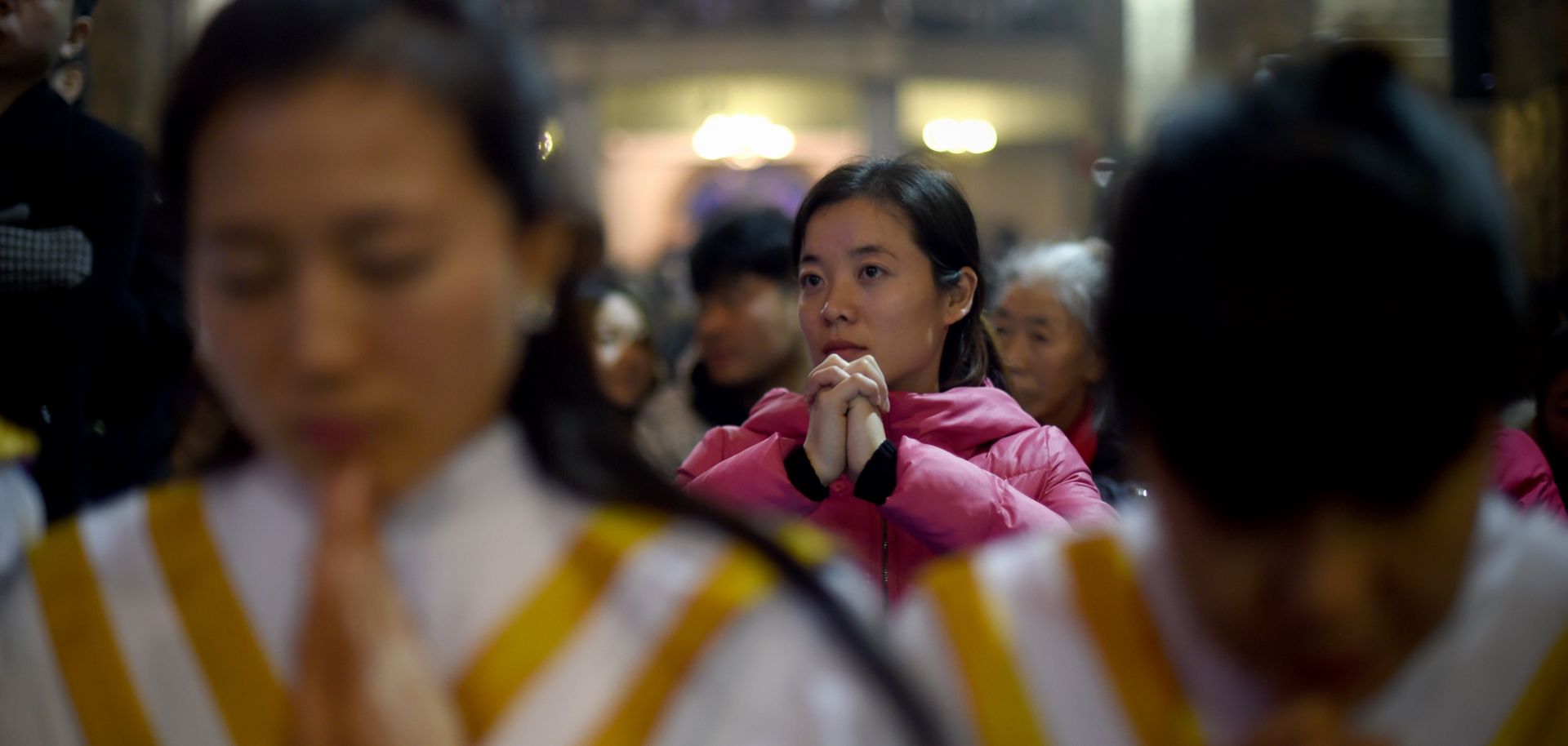COLUMNS
The Catholic Church and China: Where Religion and Geopolitics Meet

Mar 30, 2018 | 17:37 GMT

Chinese worshippers attend Christmas Eve Mass at a Catholic church in Beijing during 2015.
(WANG ZHAO/AFP/Getty Images)
Highlights
- The Roman Catholic Church has been at odds with the state in China since the imperial period, reflecting the broader dynamic of politics trumping religion in the country.
- Religious movements in China succeed best when they can show they are not a threat to centralized control, as with Buddhism.
- But the Vatican's fortunes may change as it approaches a possible compromise with Beijing, causing repercussions for Christianity in China as well as for Taiwan.
Subscribe Now
SubscribeAlready have an account?
